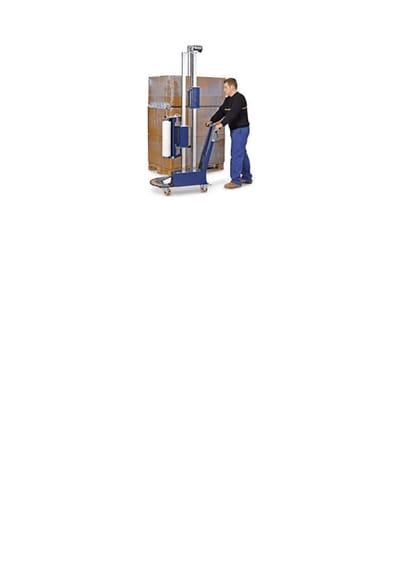Stretch film substitute - in goods stack transport // Dehnfolienersatz im Warenstapel-Transport

Stretch film replacement - for transporting stacks of goods - by means of tensionable wrapping
The inventive new
Whether delicate fruit or heavy items, all stacks of goods have to be wrapped x times with stretch film for despatch. Does this have to continue?
Motivated to find a future-proof replacement for vast quantities of film material - which remains as problematic waste after each delivery - I devised a solution using a new type of device: the result was a simple stretch wrapping that can be used hundreds of times.
This device is able to secure the stacks of goods (including those on Air- & Seaway) during transport to prevent them from slipping and falling.
The sheathing could be made of robust, lightweight and inexpensive PVC fabric tarpaulin - about 1.2 metres wide. Protective fence nets could also be used for this purpose.
This sheathing, which encloses the stack of goods, is fixed at each end with an 18 x 18 mm hardwood strip, for example.
A ratchet, which sits firmly on the "ratchet strip", ensures that the sheath is rolled up tightly. The head of the ratchet is a ½ inch square*, to which the "palletiser" attaches his cordless screwdriver with the corresponding square eye.
The two mouldings are first connected using the upper and lower bracket. This allows the parallel, freely rotating ratchet bar to tighten the PVC fabric that is rolled up around this bar. To undress, the "palletiser" presses the unlock button on the ratchet head at the destination to remove the sheathing. The wrapping can now be rolled up horizontally into a compact, crease-free bar using the cordless screwdriver. This enables the fast, organised return of returnable pallets and the sheathing, which is also covered with a deposit.
* Any other head profile could be used here - but the umbrella organisation should draw up an international standard for the global exchange of goods.
The advantage
... of this device is that your warehouse staff can prepare the goods for transport in only about 3/4 of the time normally required. Just once around the pallet >> connect the casing strips >> screw in the clamping ratchet using a cordless screwdriver >> and the goods are ready for despatch.
Previously, at least 30 metres of stretch film were applied - running around the stack of goods several times. Even expensive pallet wrapping machines are cumbersome and take up a lot of space.
This wrapping would therefore contribute significantly to environmental, air and water protection. This would solve the serious environmental problem of such mountains of stretch film waste. At the same time, this would strengthen your corporate image as an environmentally conscious supplier.
The area of application
... is given on all block-shaped stacking towers; these could then be supplied without vast quantities of stretch film. The "block-shaped" ones also make up the vast majority of goods dispatched.
Only extremely bulky stacks of goods still require conventional film wrapping. Only one "palletiser" is needed to apply this simple device.
Wouldn't it make sense and be desirable for smaller warehouses and market leaders in the logistics sector to integrate such devices into their portfolio?
Profitability
The purchase probably quickly pays for itself due to the reduced labour costs and the film cost savings. The drivers return the company's own pallets - and now also the wrapping - to their dispatch warehouse (or are given a deposit). You and your customers will benefit from the use of this simple aid, as well as a good image.
Although the wrapping is also made of plastic, this still corresponds to a relevant raw material upcycling in relation to current stretch film consumption.
It is precisely the stretch films that decompose rather quickly into dreaded microplastics.
Every tonne less of it is of great benefit to us and the environment. So far, quite a lot has been collected worldwide!

Anyone is free to produce and market this simple but useful device!
© by Michael Thalhammer - Vienna - VIENNA, 28.02.2020
= = = = = = =
See also: Downcycling plastic from rivers in the button after next.


